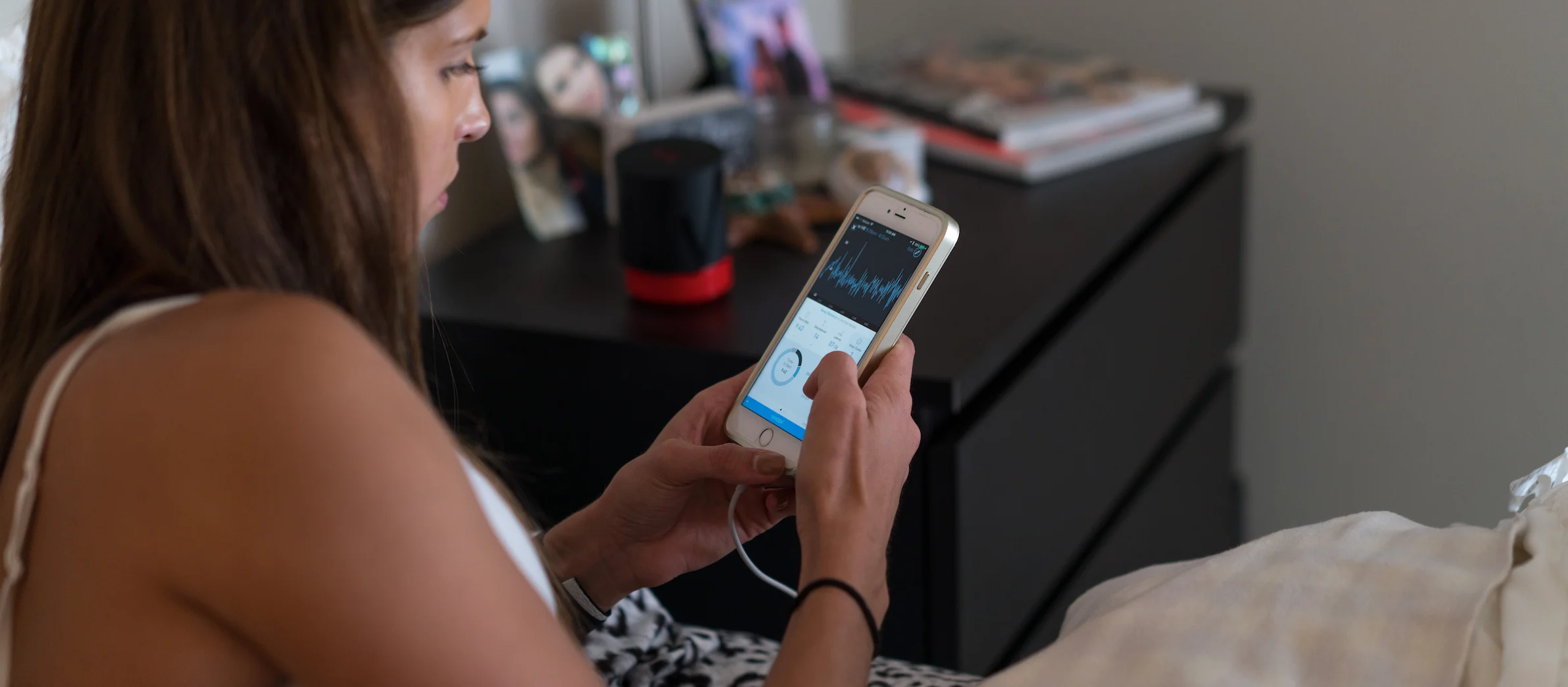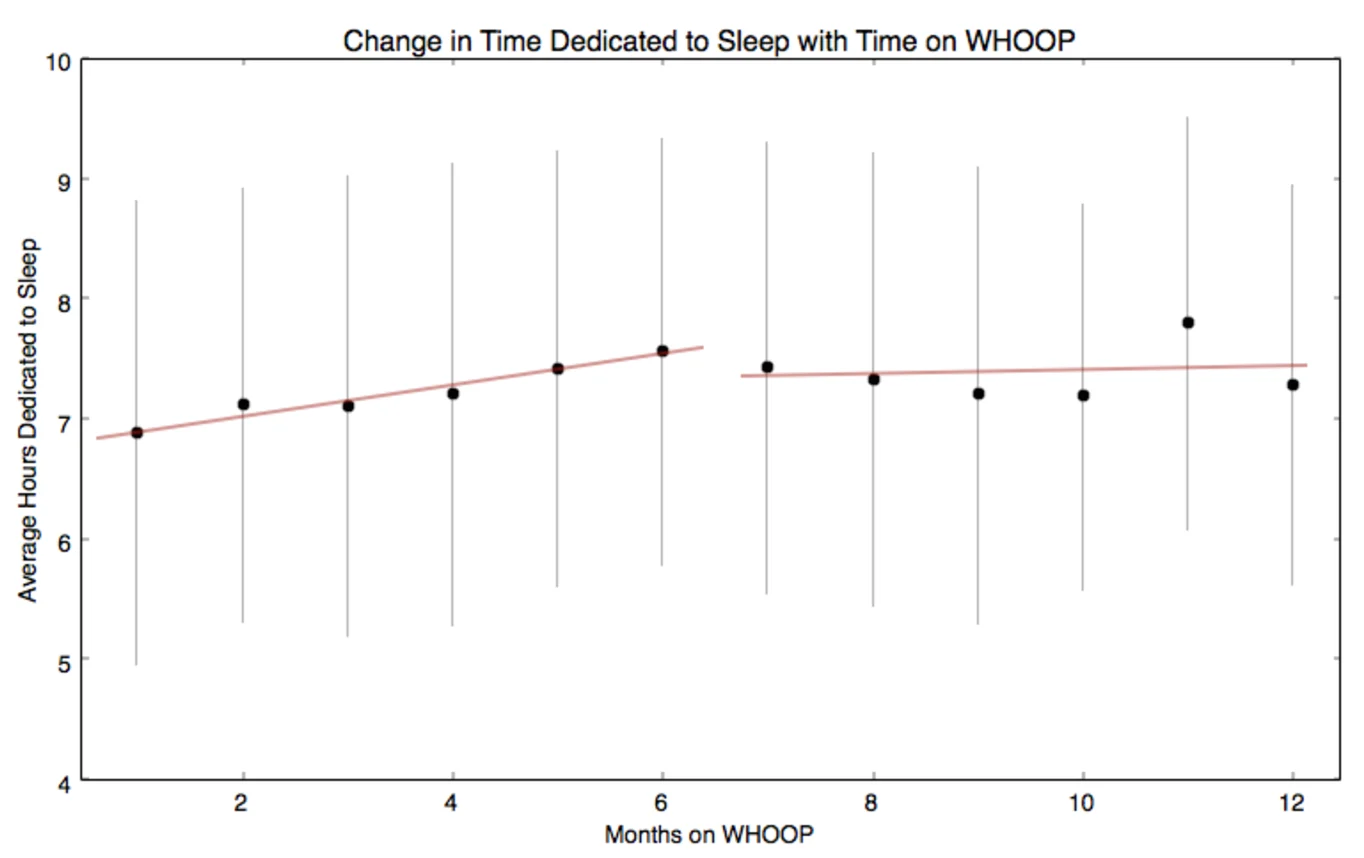Topics
- Article
Don't Just Get Enough Sleep, Get the Right Sleep

The Benefits of Sleep Regularity
In college, if I rolled into the dining hall for breakfast on a weekend morning the scene was notably different than during the week. Gone were the crowded tables of excited students, and in its place were countless empty tables and only a smattering of students. What was going on in my dorm and in dorms across the country was the long awaited weekend sleep-in.
According to one survey by the National Sleep Foundation, about 60% of people are getting more sleep on weekends than on weekdays. Analysis of 310 current collegiate athletes who use WHOOP was conducted for this article, and confirmed the National Sleep Foundation’s finding by showing that 62% are getting more sleep on weekends than on weekdays. A recent study out of Harvard University examined this behavior pattern in students in order to find out if the regularity of sleep/wake timing impacted academic performance.
What they found is probably enough to motivate all those cozily sleeping students out of bed–using a new metric they created for the study, the “sleep regularity index (SRI),” they observed a 0.1 point increase in GPA (on the 4.0 scale) per 10% improvement in SRI. According to the study’s authors, SRI is “the probability of an individual being in the same state (asleep vs. awake) at any two time-points 24 hours apart.” These second-by-second probabilities are then scored such that a perfectly consistent schedule will earn a 100% and a completely random schedule will earn a 0.
While they caution that the results show a correlative and not a causative relationship, the study’s authors suggest that those students who worked with their circadian rhythms (biological clocks) by sleeping and waking at regular times slept deeper and more efficiently and therefore were able to better reach their academic potentials than were their classmates who worked against their circadian rhythms by sleeping and waking at inconsistent times. The change in GPA associated with SRI is even more interesting given that the high-SRI students didn’t actually average any more sleep than did their low-SRI classmates.
This second part is particularly interesting because college students’ schedules are so jam-packed, that the common advice “try to get more sleep” is, or at least feels, impossible to action. However, what this study showed was that you don’t necessarily have to get more sleep to get more sleep-related benefits; some schedule rearranging might be all it takes to unlock some of the unrealized potential of the amount of time you are already dedicating to sleep. That’s not to say that increasing your SRI can make up for inadequate sleep–you still need to get those Z’s, but it does remind us that not all sleep was created equally, and there are better and worse ways to arrange your sleep-wake schedule.
This is the part that was intriguing to the Analytics team at WHOOP–our athletes are constantly asking us how they can sleep better, recover faster, and reach peak performance, and while we have an arsenal of tips and tricks to share, there is a limit to the amount of additional time our athletes can dedicate to sleep each night while still meeting their athletic, academic, personal, and social commitments.
In 2016, we reported that over their first four months on WHOOP, a cohort of 119 college athletes increased their nightly commitment to sleep by an average of about 41 minutes. This data suggests that the average collegiate athlete has at least some capacity to increase their sleep time investment, but the month-over-month increase in sleep observed for these athletes’ first 4 months on WHOOP is expected to level off at some point as added sleep time starts to butt up against other priorities. For this post, we therefore went back and looked at sleep increases over time for collegiate athletes who have been on the system for about a year.

What we observed was that for thousands of sleeps from 121 collegiate athletes, average time dedicated to sleep increased somewhat steadily over the first 6 months before settling into a more stable norm. Note that these are not the same athletes that were analyzed in the initial study cited above, but a new cohort who joined the system shortly after our second-generation product, WHOOP Strap 2.0, was introduced.
This data suggests that our average collegiate athlete has likely maxed out on their ability to increase their time dedicated to sleep by around their 6th month on WHOOP. However, that doesn’t mean that their ability to benefit from the sleep aspects of our product is tapped out. The quality and restorativeness of our sleep is dictated by so much more than how much time we spend in bed.
For example, in an earlier post we recommended that you make your bedroom as dark, quiet, and comfortable as possible, that you cut out nighttime caffeine and alcohol, that you reduce or eliminate screen time before bed, and that you avoid working from bed; we still stand by all that great advice but want to challenge our collegiate athletes who are gearing up for the fall semester to consider one more behavioral change to promote optimal sleep efficiency and Recovery: challenge yourselves to sleep as consistently as possible. If you do, you and your grades will thank us.